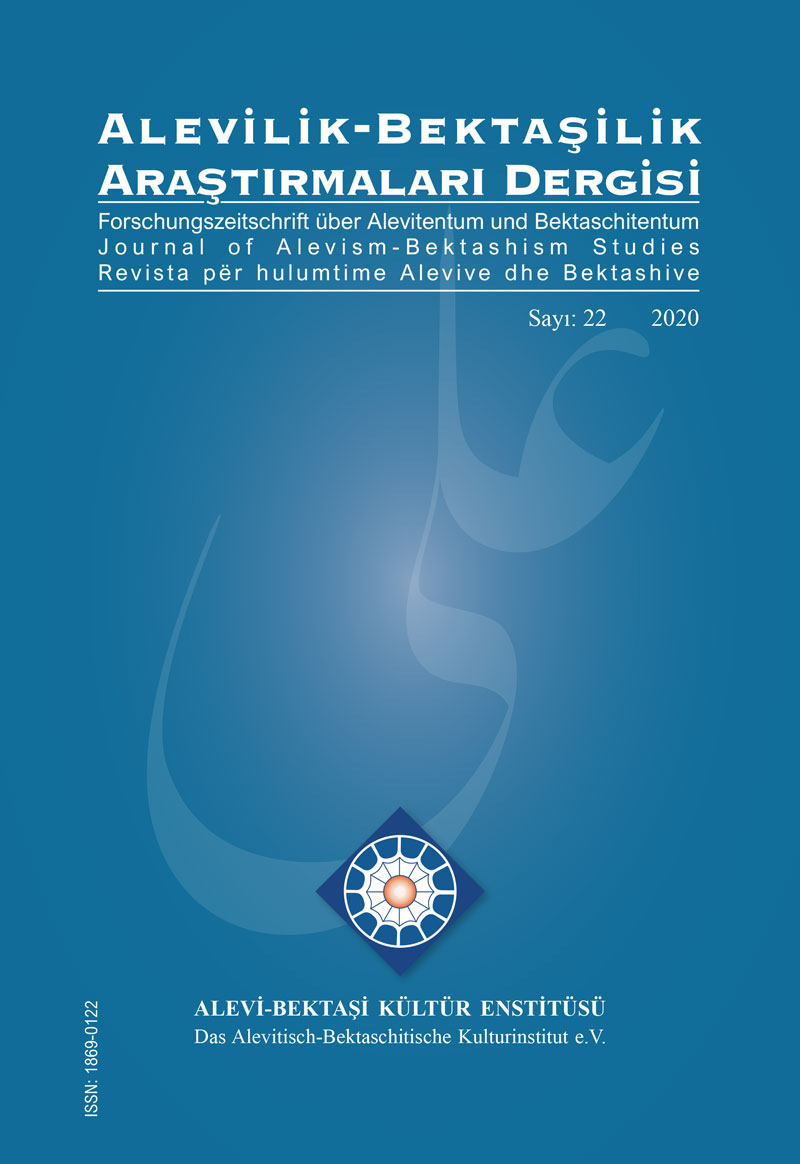Hatâyî’nin Nasihatnâmesi
DOI:
https://doi.org/10.24082/2020.abked.289Anahtar Kelimeler:
Hatâyî, Kızılbaş, Nasihatnâme, Pendnâme, Vahdet-i Vücut, DervişÖzet
Klasik edebiyatta bir konu üzerinde öğüt vermek amacıyla yazılmış ahlaki-didaktik eserlere nasihatnâme yahut pendnâme denir. Bu türden eserlerden biri de Hatâyî’nin yazmış olduğu Nasihatnâme’dir. Hatâyî Divanı ile beraber Şeyh Safî Buyruklarında, Anadolu’da derlenen şiir mecmualarında, tarikat usullerini anlatan erkânnamelerde de sıkça kaydedilen bu eser; Ca’ferîlik, vahdet-i vücut ve Safevîlik (Kızılbaşlık) hakkında dervişlere verilen nasihatlerden ibaret olup tevhit, nübüvvet, imâmet, nasihat ve dua bahislerinden oluşur.
Döneminde önemli eserler vermiş ve çığır açmış olan Hatâyî, Alevî- Bektaşî edebiyatına damgasını vurmuş bu edebi çevrenin yedi büyük şairinden biri olarak kabul edilmiştir. Hatâyî, kısa süren yaşamı boyunca, vaktinin çoğunu devlet işlerine sarf etmesine bakmayarak zengin ve çok yönlü bir miras yaratmıştır. O hem aruz vezni hem de hece vezniyle, hem epik hem de lirik türlerde eser vermiş, akılda kalan, örnek olabilen eserleri ile edebiyatımızı zenginleştirmiştir. Onun edebiyat ve dil tarihinde oynadığı rol, Azerbaycan devletçiliğinin tarihinde oynadığı rol kadar önemlidir. Devlet kuran bir hükümdar olarak Türk diline verdiği resmi önemle beraber bir şair, sanatkâr olarak da unutulmaz eserler yaratmıştır. Bu eserlerden biri olan Nasihatnâme, Hatâyî’nin; dervişlere verdiği nasihatleri işleyen bir mesnevidir.
Adından da anlaşılacağı üzere didaktik bir mesnevi olan Nasihatnâme, şiiri zaten dini inanışını ve ideolojisini yaymak adına kullanan Hatâyî’nin, Ehlibeyt sevgisini, Safevî tarikatının erkânı ve usulünü anlattığı ve öğütler verdiği bir manzumedir. Bu yazıda Nasihatnâme; tanıtılıp Türk Edebiyatı araştırmalarına kazandırılmak amacıyla; vezin, dil, bölümler, muhteva ve dinî öğeler yönünden incelenmiştir. Sonuçta Nasihatnâme’nin; Anadolu ve Safevîlik alakası, Safevîliğin inançları, Safevîliğin yapısı ve terminolojisi hakkında önemli konularda birtakım veriler içerdiği görülmüştür. Şiiri didaktik amaçlarla kullanan Hatâyî’nin, gazellerinde yaptığı gibi mesnevide de şekil ve muhteva değişikliğine gittiği anlaşılmıştır.








